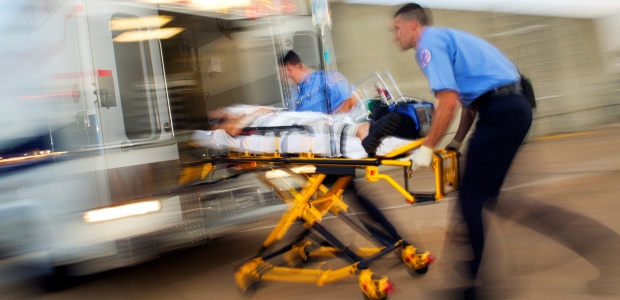
Commenters Support OSHA Violence Standard for Health Care
Many commenters also support expanding the agency's definition of workplace violence.
OSHA now has plenty of material and recommendations to chew on as it considers whether to propose a standard on preventing workplace violence aimed at workers in health care and social assistance settings. More than 150 comment documents have been posted to the online docket; many of them were posted during the week of April 3-7, but the most recent one was posted April 17 and concerns violent incidents at the Alaska Psychiatric Institute (API), a residential mental health facility. Mike Robbins, business agent for Alaska State Employees Association/AFSCME Local 52, which represents the line staff working there, filed them. They discuss the local's review of 2007-2012 API Unusual Occurrence Reports: "More than 950 assaults of staff occurred over a 5-year period. And these are just the physical assaults that were serious enough to record. Many more are not," the comments state.
OSHA set an April 6 deadline for comments in response to its Request for Information on whether to propose a standard and then held a public meeting on the topic in January 2017 in Washington, D.C. Comments have been submitted by many individuals and organizations that include the American Society of Safety Engineers, the International Association of Fire Fighters (IAFF), The Joint Commission, NIOSH, the National Association of Emergency Medical Technicians, the American Association of Occupational Health Nurses, Inc. (AAOHN), the Emergency Nurses Association (ENA), and the Association of Occupational Health Professionals in Healthcare (AOHP).
Local 52's comments recommended training at initial hire and retraining at least annually and within five days following a violent incident. They also recommended a tracking/communication system be required for potentially violent patients -- a system immediately viewable for all floor staff coming onto and going off shift.
ASSE's comments recommended that OSHA harmonize with Cal/OSHA in defining workplace violence and also work closely with NIOSH on this rulemaking and future guidance. The comments say ASSE supports including home health care services within the scope of the standard. ASSE recommended addressing only health care and social assistance in a workplace violence standard, saying OSHA's General Duty Clause is sufficient for enforcement of unaddressed hazards in low-risk industries.
Nine states have mandatory workplace violence rules, and most Canadian provinces and the Canadian federal government have added workplace violence requirements to their regulations, ASSE pointed out.
AAOHN, too, supports expanding OSHA's definition "based on an important study finding in which 30 percent of hospital worker participants that reported being verbally abused only."
A key question OSHA asked was what violence incidents should be reportable cases on the employers' OSHA injury and illness logs. The log alone is not a sufficient tool for evaluating workplace violence prevention programs because it significantly under-reports incidents, AAOHN said, citing its own study of incidents at six hospitals. While an average of 81 events per year were reported on the facilities' OSHA logs, an AAOHN survey of 5,400 workers in the hospitals found 1,200 physical assaults, 2,200 physical threats, and 5,700 verbal abuse events during one 12-month period.
IAFF, which represents 300,000 firefighters and EMS personnel in the United States and Canada, supports the development of a standard and said OSHA's workplace violence definition should clearly indicate that threats of assault can be both verbal and non-verbal. The association said in the comments, "unfortunately, instituting this type of program will require a cultural change. Many fire and EMS workers are 'trained' early on that workplace assault and battery from patients is 'part of the job.' This type of mentality will undoubtedly reduce reporting."
AOHP, in its comments, said offered feedback on the definition and the components of proactive prevention programs. "AOHP has been concerned about escalating WPV events in health care, which are too often viewed as 'part of the job.' We have addressed this topic in our public policy statements since 2013, and we support implementing comprehensive WPV programs that are risk specific to each health care organization or facility," said AOHP Executive President Mary Bliss, RN, COHN.
The Joint Commission also supported development of an OSHA standard in its comments and urged OSHA to have it cover all employees regardless of job title or facility/setting, rather than limiting its scope only to those who provide direct patient care. And the organization asked OSHA to collaborate with Accrediting Organizations on standards, guidance, and toolkit development in order to ensure its standards do not conflict with existing accreditation standards.
NIOSH, in its comments, said if a diagnosed mental illness, such as PTSD, results from a workplace violence incident and the employer is aware of it, the standard should require that it be included on the OSHA log. An OSHA standard "may need a section specific to home healthcare and social service workers because of the unique working conditions," NIOSH stated in its comments.
ENA's comments warned that its research shows reporting of verbal threats is "problematic for several reasons." Reporting "tends to be onerous and not a systematic requirement," it explained, and verbal harassment tends to be taken far less seriously because no physical violence occurred, although the comments note that "continual verbal assaults can lead to toxic, high-stress workplaces that contribute to job dissatisfaction and staff turnover."